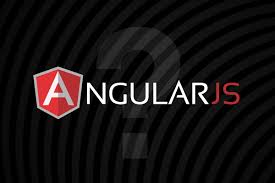AngularJS, a well-liked JavaScript framework, enables developers to strut the power markedly of HTML by means of what it calls 'directives. ‘These specifications are, in effect, additional features that the HTML elements get after the introduction to web designing to create interactive and responsive web applications.
Our blog today is going to be about the technicalities of directives: the various admin controls you will encounter and how you can harness the ability of AngularJS for better results. Let’s understand what AngularJS Directives are.
What Are AngularJS Directives?
Commands are special attributes of the markup that tell the library to carry out some manipulations to a DOM element or its children. Among the main benefits of Angular is the presence of the built-in directives, which can be used to manage DOM attributes, style, events, and their own logic.
Common Built-in AngularJS Directives
- ng-app: This command specifies your AngularJS application as a starting point. It is almost always integrated at the start of the HTML structure for <body> or <html> which bootstraps the application.
- ng-model: This directive is the one that defines the value of the model with application data. This is achieved through the usage of HTML controls (like input, select, textarea). It is a significant piece in the data-binding game and guarantees that scenarios like changes in UI always cause changes in application state and changes in application always lead to changes in UI.
- ng-init: Although the ng-init is used less often, you can immediately initialize the application data through HTML by using this. It is in this that the benefit of being easy to get started in is.
- ng-repeat: A great instruction for listing out a number of things through setting up multiple instances of an HTML element for the items appearing in an array. The reason is, as it reduces the troubles of making a form of a list with complicated codes. This makes the overall JavaScript easier and effective.
AngularJS, through data binding, tries to simplify and synchronize a model and view. Ng-model leaves a correlation between the HTML element and the model in AngularJS once it is used.
Here, there is an inherent connection between the input space and the model. Once the model is updated, the input will be updated as well. When the input is updated, the model will also be updated. This configures the properties basically as the core components in AngularJS which significantly reduces the development time and greatly enhances the efficiency.
Creating Custom Directives
AngularJS can be considered the tool of choice among flexible frameworks since it enables developers to make their own custom directives. Such that component is quite handy in case of reusability of component and when structure of HTML and CSS is too complex.
Custom Directive- How to Do It
1. Define the Directive: Apply a period to the sentence. the directive(your-directive) method of your Angular module in which you will define a new directive. You use the name of the template and a factory function that provides the template's configuration object.
var app = angular.module("myApp", []);
app.directive("w3TestDirective", function() {
return {
template: "<h1>Made by a directive!</h1>"
};
});
2. Configuring the Directive: The directive's behavior can be controlled within the configuration object. Sample, you can describe how you can specify templates, restrict the component access (E for element, A for attribute, C for class, and M for comment), and isolate scopes for creating modular components
3. Using the Directive: When finalized, the directives can be inserted in your HTML code. By the limits you have specified you easily can use it either as an element, an attribute, a class or a comment.
<w3-test-directive></w3-test-directive> <!-- as an element -->
<div w3-test-directive></div> <!-- as an attribute -->
Best Practices and Common Usage Cases
While directives as such enable you to gain access to the full power of the functions, you must employ them only commonly sense. In such case, AngularJS directives use, particularly, custom ones often generate complications in the app. The common rule is to stick to the built-in directives and create custom directives only when other options are unexhausted and the functionality you need is not attainable any other way.
Directives are preferable in the case of creating reusable UI components (for instance, widgets), implementing complex UI interactions, or integrating third-party libraries into your AngularJS applications.
Conclusion
AngularJS directives are the essence that is required to build dynamic, responsive, and powerful web applications. Through the knowledge of in-built and user-made directives, you can greatly reduce your development process time and write code that is more modular, and less straining to maintain.
It does not matter whether you are advanced or at your beginner stage, knowing how to use directives properly will help you gain proficiency in AngularJS.




Leave Comment